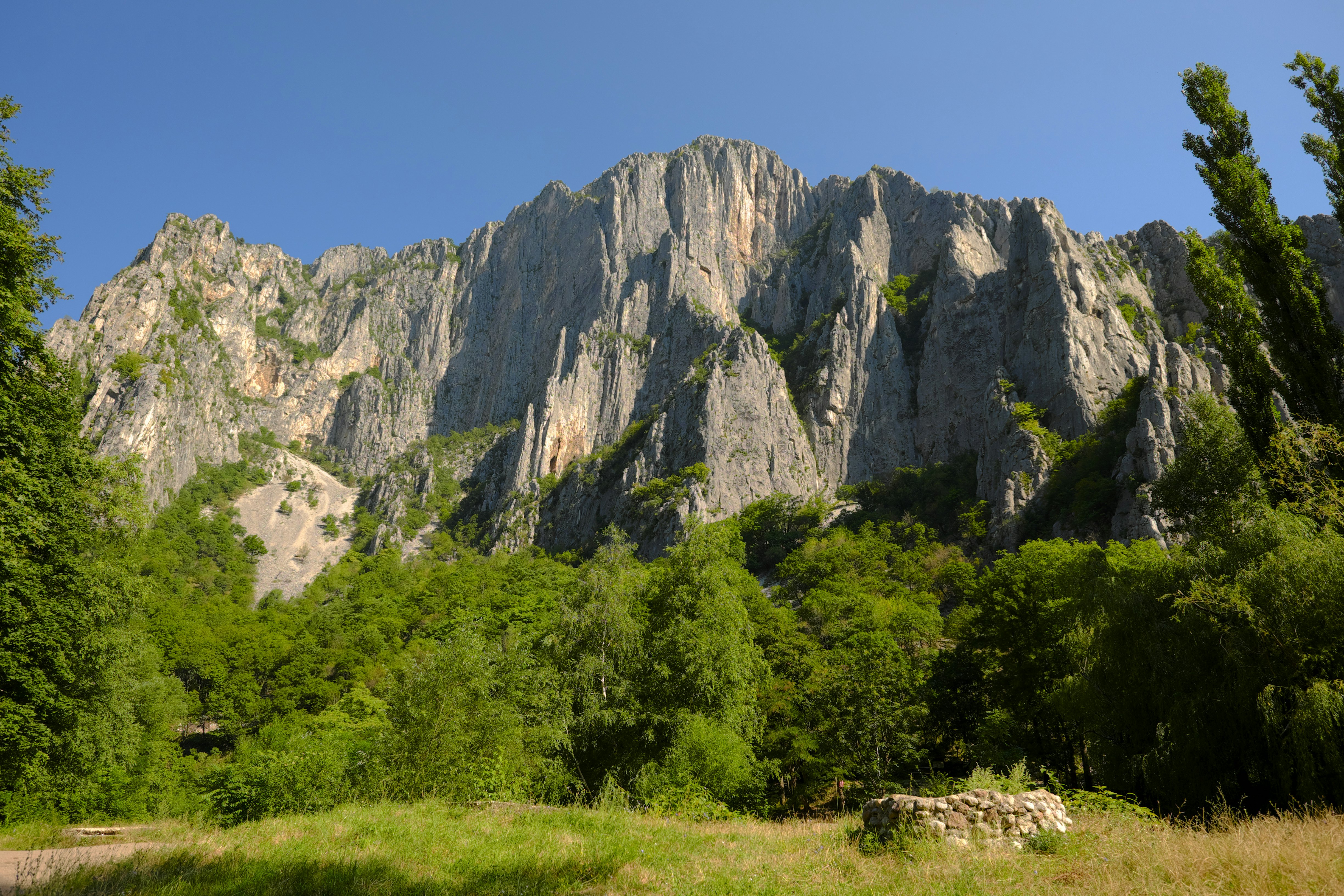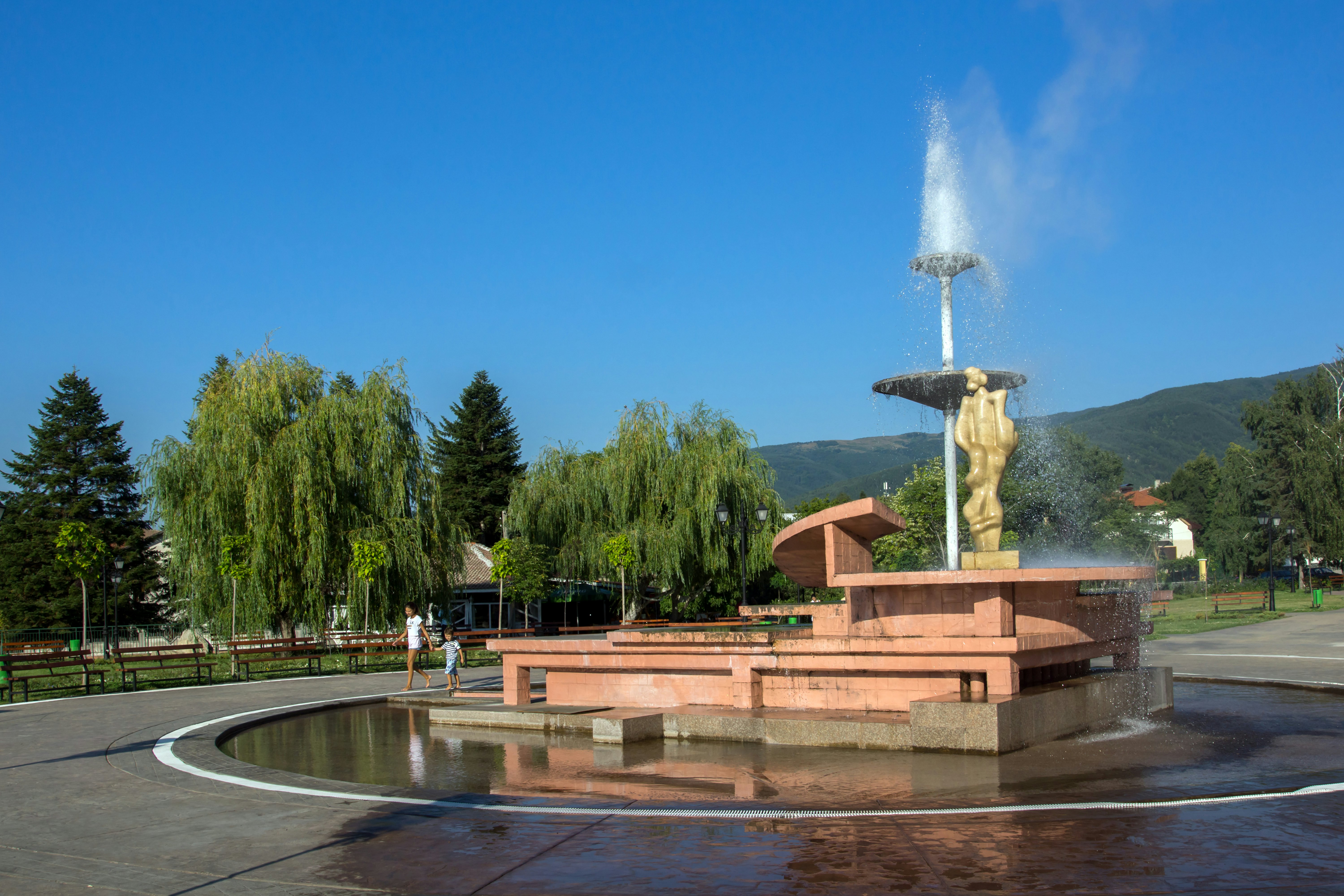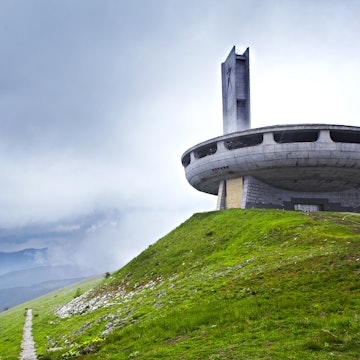

Illuminated ancient amphitheatre of Philippopolis in Plovdiv. Nickolay Kunev / 500px
After enjoying Sofia’s eclectic cultural scene, laid-back atmosphere and many restaurants and clubs, many travellers head straight to Bulgaria’s Black Sea Coast resorts. But it’s well worth exploring closer to the capital to get a sense of the country’s authentic spirit that’s most visible in provincial towns and villages. Visit unique historic sites, marvel at soul-stirring mountains and bathe in natural hot springs that are all within day-trip range of Sofia.
Ancient ruins in Plovdiv
Bulgaria’s ancient and romantic second city, Plovdiv is the 2019 European Capital of Culture for good reason. Ramble around the cobblestoned streets of the old town, have a peek at the 19th-century Bulgarian Revival–style mansions and climb at least one of its seven hills. The 200m-high Nebet Tepe (Prayer Hill) is particularly worth visiting for a stunning panoramic view; it also boasts the ruins of Eumolpias, a Thracian settlement dating from 5000 BC. Other highlights include the majestic Roman amphitheatre, built in the AD 2nd century under the reign of Emperor Trajan, and the Kapana artistic quarter, famous for its music and art festival that’s usually held in early June.
Getting there: Reaching Plovdiv takes just 90 minutes by car from Sofia (or even less due to the highway speed limit of 140 km/h). Buses and trains also run regularly; buses are more expensive but faster (it’s about two hours by bus and around three hours by train).

Nature escape in Vratsa
Nestled in the foothills of the Vrachanska Mountains, Vratsa is a relaxed small town with charming pavement cafes, rich history and unspoilt nature on its doorstep. For a stroll with gorgeous views, opt for the bicycle track (which is mostly pedestrian) starting at the Hristo Botev square and ending at Chaika hotel and restaurant. Walking further, you’ll reach the Vratsata gorge, a natural phenomenon and a world-class rock-climbing spot. Alternatively, catch a taxi (around 15 lv one-way) and venture inside the famous Ledenika Cave (meaning ‘ice cave’) within the Vrachanski Balkan Nature Park. Don’t miss the regional history museum, whose prized possession is the Rogozen Treasure, a large collection of Thracian silver artefacts.
Getting there: Vratsa is easily accessible by car or bus (90 minutes to two hours). Buses depart almost every hour and cost around 12 lv. Another option is catching a train from Sofia’s Central Station (around 7 lv). Trains might have delays but the beautiful scenery of Iskar Gorge is well worth it.

Hot springs in Sapareva Banya
There’s nothing more relaxing than a dip into a hot spring – even the Thracians and the Romans used to benefit from the restorative power of Sapareva Banya’s mineral waters. Choose your own spa indulgence at Complex Koko Hills or Sveti Nikola Hotel, among other top-rated spots; afterwards take a walk around the small town’s central area and check out the 18m-high geyser that’s considered the hottest in Europe (the water temperature is 103 degrees Celsius). Grab a traditional Bulgarian lunch at the nearby Geizera restaurant.
Getting there: Sapareva Banya is just about an hour’s drive by car from Sofia. No trains are available; buses aren’t recommended for a day trip as the earliest one usually departs in the afternoon.

Trek to the Rilska Skakavitsa waterfall
For an exhilarating trek, strap on your backpack and head to the Rilska Skakavitsa waterfall. Situated on approximately 2000m above sea level, this is the highest waterfall in the towering Rila Mountains. The area is part of the Rila National Park and it’s rich in rare flora and fauna, including the endemic white fir. The hike is refreshing and relatively easy, taking about an hour to reach the Skakavitsa Hut. Here you can refuel with meatballs and shopska salad, before continuing with the trek for another half an hour to enjoy the pleasant shade of the forest and marvel at the crystal-clear water cascading from a height of 70m.
Getting there: The trek starts from Zeleni Preslap district. From Sofia, it’s a 90-minute drive to the village of Panichishte; from there, continue to Zeleni Preslap for another 13 minutes. There’s no dependable public transport.

Spiritual experience at the Rila Monastery
Hidden in a lush valley in the Rila Mountains, the Rila Monastery is one of Bulgaria’s most revered landmarks that has served as a major religious and educational centre for centuries. Resembling a fortress, it features remarkable medieval architecture and religious art – pop into the main Church of Rozhdestvo Bogorodichno for a glimpse of splendid frescoes with apocalyptic scenes. The legend says that Rila Monastery was founded by hermit monk St Ivan Rilski. The saint lived a simple life, devoted to God, in a mountain cave near the monastery. It’s an easy walk through the forest to this sacred place, where wishes are believed to come true.
Getting there: The easiest way to visit the Rila Monastery is by car (the drive from Sofia takes about two hours) or as part of a tour. Public transport isn’t very reliable so it’s not the best option for a day trip.











